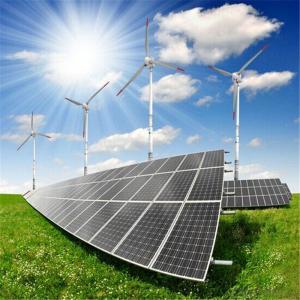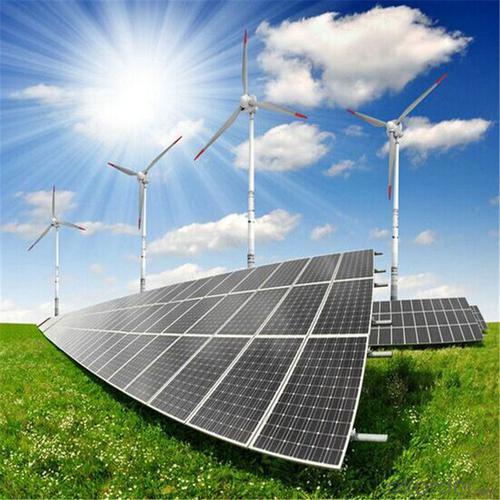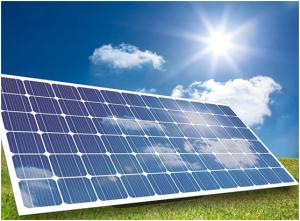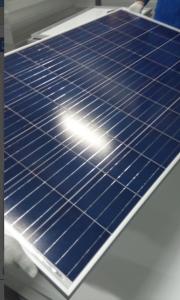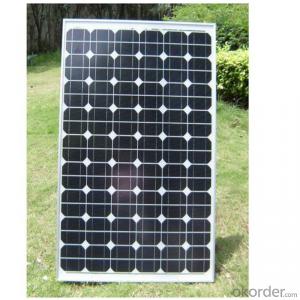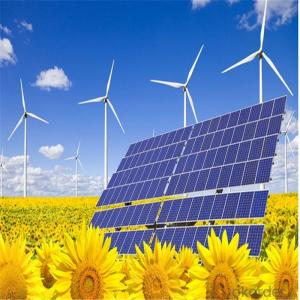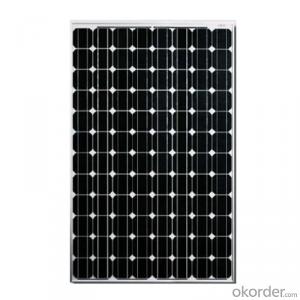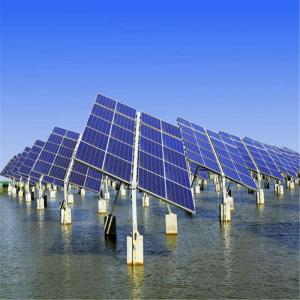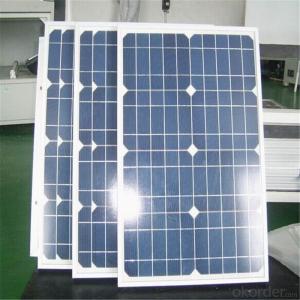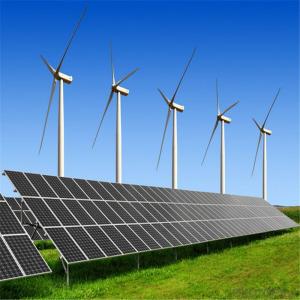High Efficiency Mono Solar Panel Made in China Ice-08 with Tesla Battery Compatibility
- Loading Port:
- China main port
- Payment Terms:
- TT OR LC
- Min Order Qty:
- 200 watt
- Supply Capability:
- 50000 watt/month
OKorder Service Pledge
OKorder Financial Service
You Might Also Like
Instruction
Format : 156 mm × 156 mm ± 0.5 mm
Thickness: 210 μm ±40 μm
Front (-) : 1.5mm bus bars (silver),blue anti-reflection coating (silicon nitride)
Back (+) : 2.5mm wide soldering pads (silver) back surface field (aluminium)
Feature
1. High efficiency and High power.
2. Long-term electrical stability.
3. Lowest price and Fastest delivery.
4. Good quality and best service.
5. Bulk supply
6. Trusted Warranty
7. Big Sale
8. More than 25 years on the lifetime.
Images
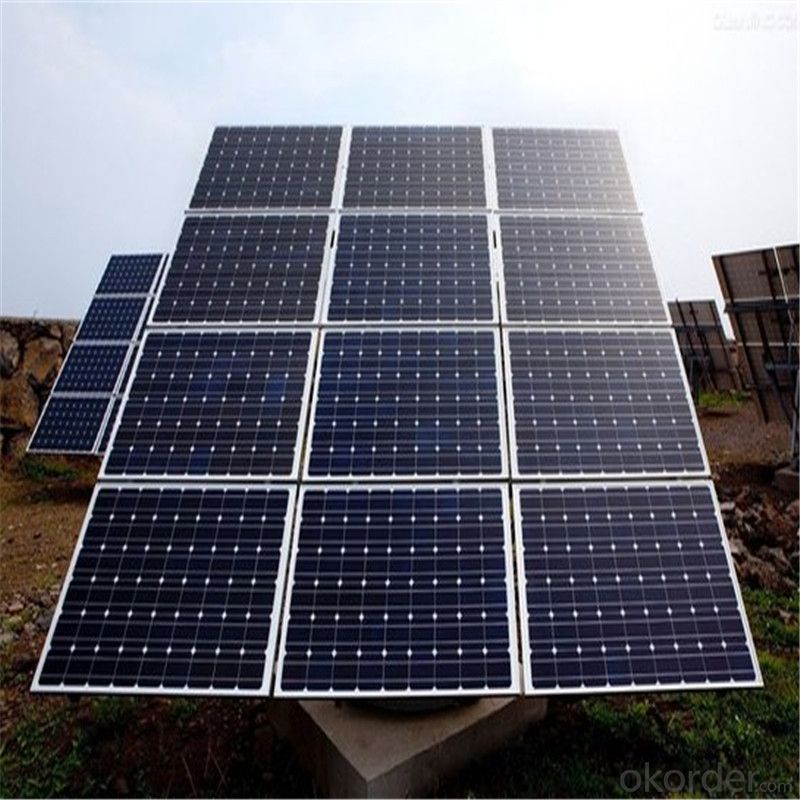
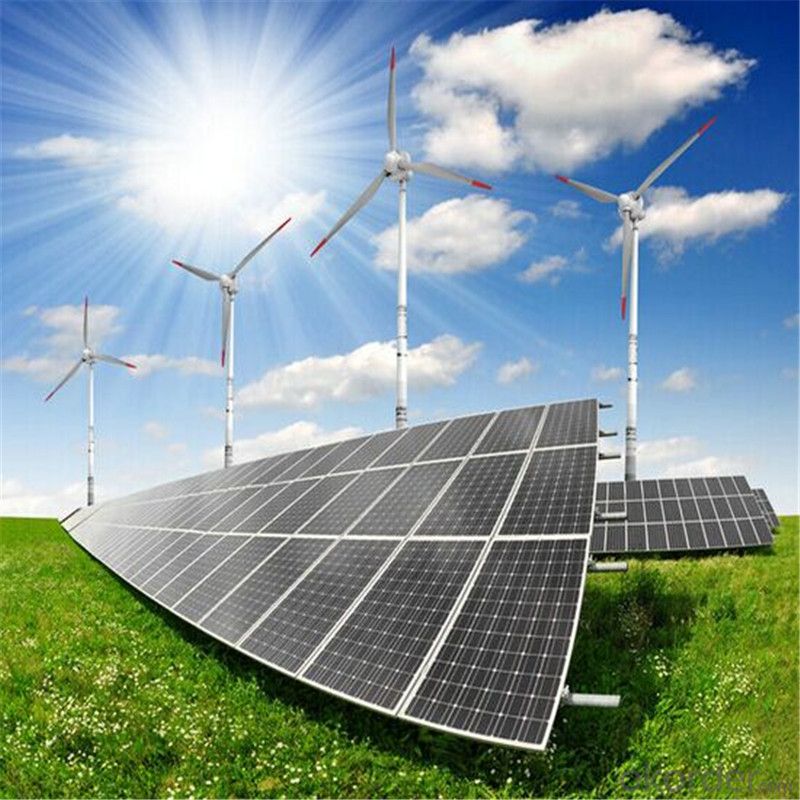
Specification
Electrical Characteristic of Mono Solar Cells
Model Type | |
Peak Power-Pmax(W) | 185 |
Open Circuit Voltage-Voc(V) | 44.2 |
Maximum Power Voltage-Vmp(V) | 36 |
Short Circuit Current-Isc(A) | 5.4 |
Maximum Power Current-Imp(A) | 5 |
Maximum System Voltage | 1000V DC |
Maximum Series Fuse Rating | 10A |
Power Tolerance | -1~+3% |
Temperature Coefficients of Pmax | -0.45%/℃ |
Temperature Coefficients of Voc | -0.348%/℃ |
Temperature Coefficients of Isc | 0.031%/℃ |
Nominal Operating Cell Temperature | 44.5±2℃ |
Standard Testing Condition(STC) | Irradiance:1000W/m²;Temperature:25℃;AM=1.5 |
Qualification Test Parameters | |
Operating Temperature | -40℃~+85℃ |
Storage Temperature | -40℃~+85℃ |
Pressure Bearing | ≥5400Pascal/m² |
Wind Bearing | ≥5400Pascal/m² |
Mechanical Characteristics | |
Cell Size | Mono 125*125mm±0.5 |
No.of Cells | 72pcs(6*12) |
FAQ
We have organized several common questions for our clients,may help you sincerely:
1. What’s price per watt?
A: It’s depends on the quantity, delivery date and payment terms of the order. We can talk further about the detail price issue. Our products is high quality with lower price level.
2. Can you tell me the parameter of your solar cells?
We have different series of cells with different power output, both from c-si to a-si. Please take our specification sheet for your reference.
3. How do you pack your products?
We have rich experience on how to pack the panels to make sure the safety on shipment when it arrives at the destination.
- Q: Hi. I need to build a solar panel for a project. it should be able to light a 60 watt light bulb. also, it should be about 3x3 ft if it is 50% efficient. if anyone knows any websites or can help me, please answer! thanks.
- I don't have any practical experience building solar panel arrays to power a given device, but allow me to make this observation. Solar cells, when exposed to sunlight, will each generate a given amount of power (watts), and by wiring these in series, you will increase the wattage. Now, a panel three feet square will give you a certain amount of power, provided all the cells are wired correctly in series, and it may not provide enough juice to light the bulb. You can work around this by adding a step-up transformer (which takes the incoming power and boosts it to the desired level for output, with no moving parts). Voila! You've illuminated your bulb. I will admit, though, you'll have to do some math to determine what you need. A search on the Web will help you find the formulae and other information you'll require. Good luck.
- Q: Can solar panels be installed on a boat or yacht?
- Yes, solar panels can be installed on a boat or yacht. Many boat and yacht owners opt to install solar panels to harness the sun's energy and power their electrical systems on board. These panels are typically mounted on the boat's roof or deck, and can provide a sustainable and renewable source of power for various applications while out on the water.
- Q: Does anyone know how I would go about hooking up the air conditioners in my house to solar panels? I would want just the air conditioners to be powered by solar energy. How could I hook it up where the panels can absorb energy from the sun during the day, and save and store the energy so I can run the air conditioners at night? I really feel that in the long run, this would save a lot of money with the energy bill. It's the use of the air conditioners that drive up the bill. Is this idea feasible? Is it also possible to have some sort of hybrid system where I can switch from solar to my regular local energy source when I want to?
- There are solar air conditioners. They don't use electricity. Most anyway. The number of photovoltaic panels you would need to run a standard electric air conditioner would cover most of the homes on the block. Read about heat pumps, Thermal storage, swamp coolers, solar heating to get an idea of what is practical. Most solar systems are hybrid because of clouds and nightfall. The best solar homes are designed from the ground up. With plenty of insulation, the right size and orientation of windows and collectors. Putting solar on an existing structure is going to be a misfit half donkey job unless you are very lucky.
- Q: Are solar panels worth the investment?
- Yes, solar panels are worth the investment. They not only help reduce electricity bills, but also provide a clean and renewable source of energy. Additionally, they can increase the value of a property and contribute to a greener and more sustainable future.
- Q: I am interested in solar energy, but am not sure how eficiant it would be in the northwest? Any comments would be apriciated.
- This okorder
- Q: I have an inverter and a battery 20 Amperes.Daily sun shine approx. 7 Hours.Do I need to buy anything or should I connect the solar panel to the Battery direct?
- No, don't connect the panel directly to the battery. You need to isolate the solar panel charging output from the AC-powered charger. A couple of high-current diodes arranged with their anodes connected to the charging sources in the positive supply line will allow either the charger or the solar panel to lift the voltage high enough to charge the battery, albeit with about 0.6 volts dropped across the diode. Both cathode ends would be connected to the battery. This arrangement allows a positive current to flow from either or both charging sources at the same time, although in practice, one will generally be higher than the other. Also, if the AC charger's voltage is significantly higher than the solar panel, the charger may always charge the battery. You would need to regulate its output to be slightly lower than the solar panel when it's near it's minimum useful operating voltage. (note that the 0.6 forward bias voltage on the diode might prevent the solar panel from completely charging the battery if it has any voltage regulation on its output)
- Q: I thought that I had a fairly good understanding of watt's law, but i'm starting to doubt myself.If I have a load of 4500watts at 240 volts, how many watts of solar panels do I need, if the solar panels are at 2v?Yes, Yes... I have a charge controller, batteries, etc...So the way I looked at this at first:watts = volts * amps For the load4500 = 240 * xx would be 8.75aFor the power source (each solar panel)00 = 2 * xx would be 8.3a8.75 / 8.3 = 2.25, rounded up = 3So... based on that I came to the conclusion that I needed 3 solar panels...But... then I was thinking. Does it work that way?Or do I need 4500 / 00 = 45, aka 45 solar panels?In other words...If I have a 2v power source, how many watts do I need to drive a load of 4500w at 240v?ThanksMatt
- The easy way is to just use the power values. You need 4500W. Each solar panel delivers 00W (from a value in your working). Therefore you need 4500/00 = 45 solar panels. This is a crude calculation, ignoring efficiencies, voltage conversion losses and losses due to internal resistance. You would probably need quite a few more than 45 panels. ___________________________ I'll explain how to do the calculation your way. Each solar panel delivers 00W with a voltage of 2V. So the current is 00/2 = 8.333A. Each solar panel delivers 8.333A at 2V. But you require 8.75A at 240V panel delivers 00W. To get 4500W, you need: 8.75/8.333 = 2.25 times more panels to increase the current AND 240/2 = 20 times more panels to increase the voltage. So overall you need 2.25 x 20 = 45 panels. Of course if the power output of each solar panel is not 00W, you have to change the above calculation accordingly.
- Q: How much energy can a solar panel generate?
- The amount of energy a solar panel can generate depends on several factors, including the size and efficiency of the panel, the amount of sunlight it receives, and the geographical location. On average, a standard residential solar panel can generate between 250 to 400 watts of power per hour, or around 2 to 4 kilowatt-hours per day. However, larger commercial or utility-scale solar panels can generate much higher amounts of energy, ranging from several kilowatts to several megawatts.
- Q: My family moved into a house that came with solar power panels but they are not connected and don't really understand how to even begin.
- You need to know some electrical basics. You need to check if they are still working and determine the output voltage with the use of testers. They are just part of a system that includes other equipments as well like a controller, car batteries, inverters, diodes.
- Q: I don't remember what number exactly but it's in the single digits. This number represents how efficient solar panels are at capturing the sun's rays and converting it into electricity.Why?
- The most important thing is for how much time the sun shines at your place. If you are living at a place where the sun shines just for to 2 hours then installing a solar panel will be of no use. But if sun shines at least 9-0 hours then solar panels will be in use.
Send your message to us
High Efficiency Mono Solar Panel Made in China Ice-08 with Tesla Battery Compatibility
- Loading Port:
- China main port
- Payment Terms:
- TT OR LC
- Min Order Qty:
- 200 watt
- Supply Capability:
- 50000 watt/month
OKorder Service Pledge
OKorder Financial Service
Similar products
Hot products
Hot Searches
Related keywords
